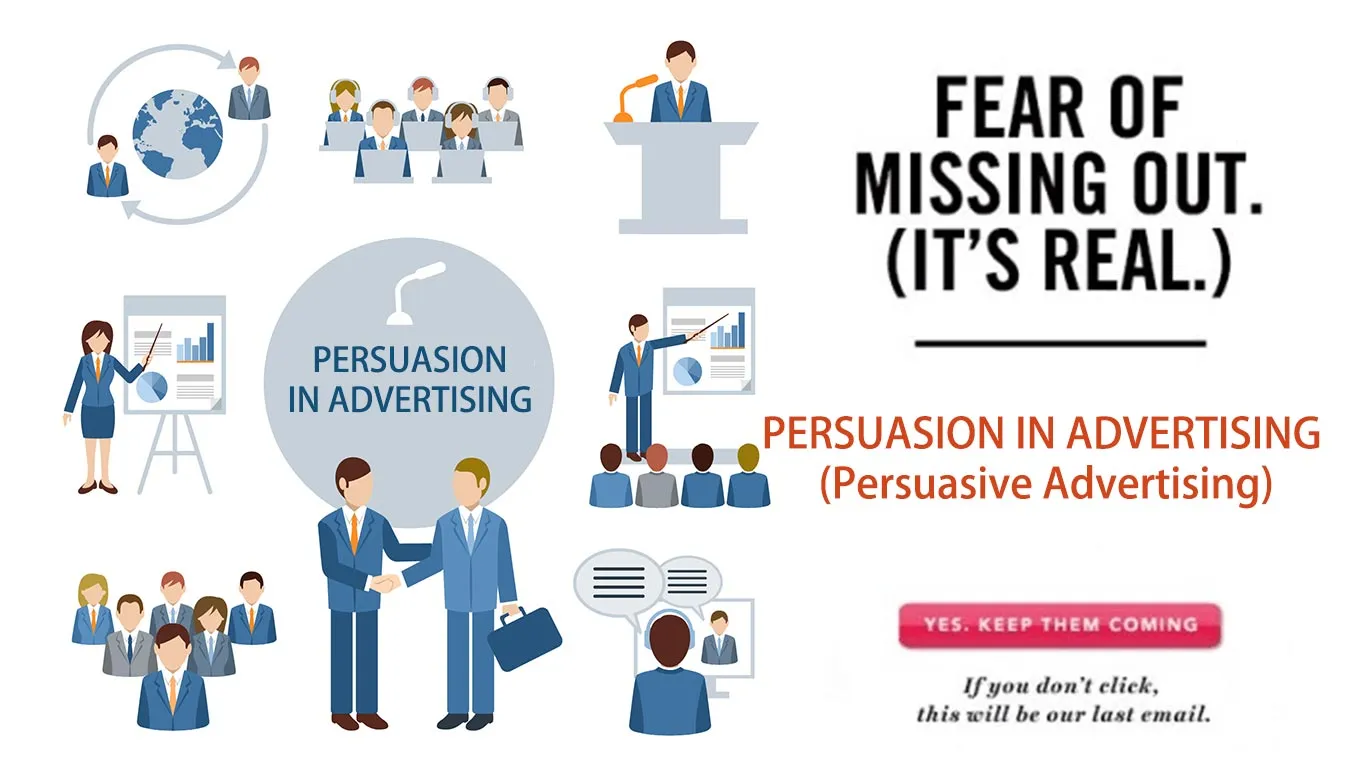Persuasion in Advertising (Persuasive Advertising)
Persuasive advertising is a type of marketing that appeal to a consumer's needs and interests in order to persuade them to buy a product or service. This advertising strategy aims to present products in a positive light and persuade customers of their benefits.

Techniques of Persuasive advertising
The three types of persuasive advertising methods are ethos, pathos, and logos. Each category elicits a different response from the speaker and the audience. Ethos invokes the speaker's ethics, or what we would call values. Pathos provokes emotional responses from the audience.
Aristotle is credited with the invention of persuasion techniques in advertising. He divided rhetoric into three divisions, ethos, pathos, and logos, more than 2,000 years ago. The rhetorical triangle is another name for it. We rely on it even now.
Each category elicits a different response from the audience.Ethos refers to the speaker's ethics, or values. Pathos provokes emotional responses from the audience. Finally, logos employ logic through the use of evidence and facts.
When you balance all three, you have a good compelling advertising strategy.
Using ethos, pathos, and logos in commercials, however, might sometimes imply emphasising one advertising style over the others.
ETHOS
Ethos is a persuasion method that emphasises credibility in order to appeal to an audience. Ethos advertising tactics appeal to a speaker's, presenter's, writer's, or brand's superior "character."
Ethos are intended to persuade the audience that the advertiser is trustworthy and ethical. It’s easier to make a decision when you have the approval of someone you respect. In advertising, ethos serves primarily this purpose.
When a well-known public figure recommends a product, it lends credibility to it in the eyes of the general public.
ExampleAn endorsement from a public figure. This marketing helps to enhance the message if the individual convincing the viewer or reader is a well-known authority figure. Celebrity branding is becoming more popular.
- Jennifer Aniston supports Smartwater.
- Stephen Curry appears in Infinitive commercials.
- Jerry Seinfeld, the comedian, is a supporter of American Express.
It's all about trustworthiness. In contemporary society, celebrities have a high status. So they're the ones selling stuff to us, regardless of whether or not they have product knowledge. The best way to unlock trust is to use ethos.
Pathos
Pathos is a persuasive strategy that uses emotions to persuade an audience. The senses, memory, nostalgia, and shared experience are all used in pathos advertising strategies. Pathos examples touch the audience's heartstrings and make them feel.
A quick technique to elicit emotion from a viewer’s is...- A cute creature.
- A bereft family.
- It is a love storey.
- Defying the odds.
- An uplifting tune with accompanying visuals.
- A good one-liner.
Pathos evokes basic feelings in the audience, such as joy, fear, and envy. All of them are easily triggered in a variety of ways.
ExampleExamples of pathos advertisements include:
- Adorable polar bears take a sip of Coke
- Cuddly kittens are looking for a new home.
- A young boy's mother dies as a result of his mother's smoking.
Logos
Logos is a persuasive strategy that uses logic and reason to persuade an audience. Logos examples in advertising include the citing of statistics, facts, charts, and graphs, also known as "the logical appeal."
Example Advertisement logo examples:- A advertisement for the iPhone that shows the latest features and specifications.
- A advertisement for Dole fruit juice that emphasises vitamin and calorie content.
- Verizon displays a map to demonstrate that it has superior coverage over AT and T.



